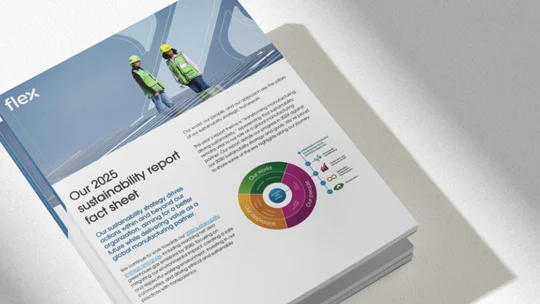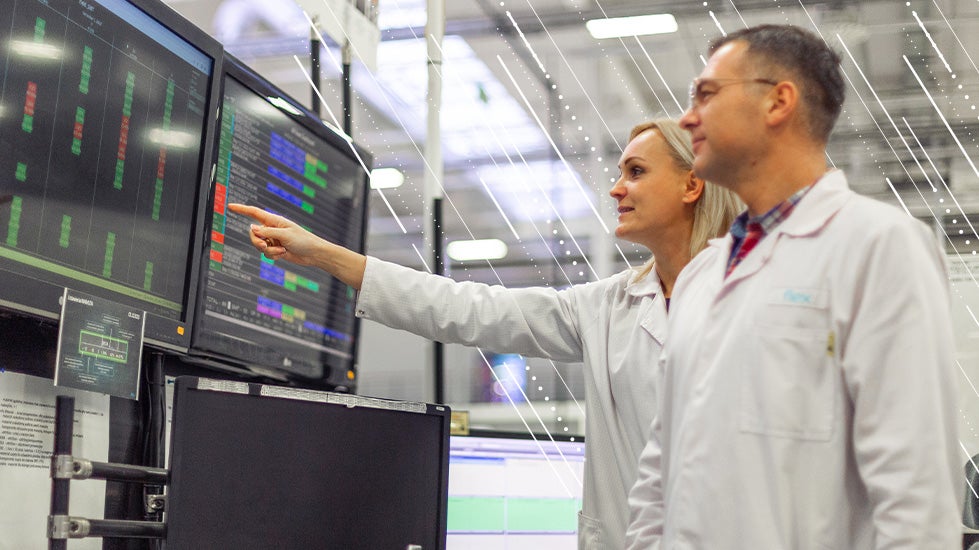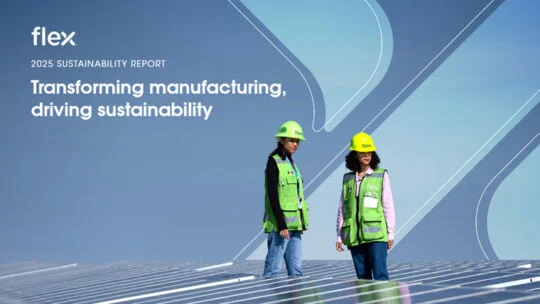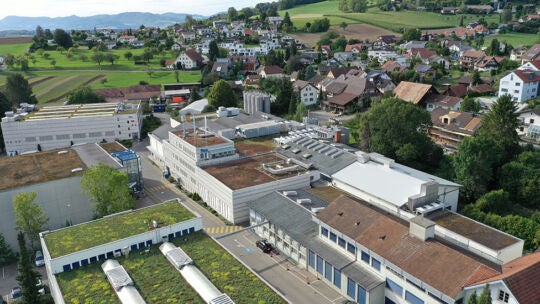
Wir leben und arbeiten in einer vernetzten Welt, das gilt für Einzelpersonen und Unternehmen gleichermaßen. Der Einfluss einer Organisation beginnt und endet nicht innerhalb ihrer Mauern, insbesondere wenn es umNachhaltigkeitsAuswirkungen und Ergebnisse. Jedes Glied in einer Kette trägt entweder zum Fortschritt einer Organisation in Richtung ihrer allgemeinen Nachhaltigkeitsziele und einer nachhaltigeren Zukunft bei oder behindert diesen.

Um Risiken zu minimieren, müssen Unternehmen bei der Festlegung ihrer langfristigen Strategie Rechenschaft ablegen und Transparenz wahren. Dies erfordert ein tiefes Verständnis dafür, wie sich jeder Unternehmensbereich – einschließlich der Lieferanten und Anbieter, mit denen Unternehmen zusammenarbeiten – potenziell auf das Gesamtrisiko auswirkt. Beispielsweise kann ein Unternehmen faire Arbeitsbedingungen für alle Mitarbeiter gewährleisten, sich aber auf einen Lieferanten verlassen, der sich nachweislich für Menschenrechte einsetzt. Dies birgt ein hohes langfristiges Risiko, das, sofern es nicht mit den erklärten Werten und Zielen des Unternehmens übereinstimmt, finanzielle Konsequenzen und negative Auswirkungen auf den Ruf der Marke haben kann.
Die Emissionsklassifizierungen der Scope-1-, Scope-2- und Scope-3-Kategorien des Weltklimarats (IPCC) sind ein wichtiger Aspekt für den Einfluss der Partner in der Wertschöpfungskette auf die Nachhaltigkeit. Scope-1- und Scope-2-Emissionen beziehen sich auf die direkten Treibhausgasemissionen eines Unternehmens sowie auf die Emissionen im Zusammenhang mit dem Kauf von Strom oder Kraftstoff. Scope 3 geht darüber hinaus und umfasst auch die Emissionen aus anderen Segmenten der Wertschöpfungskette eines Unternehmens. Dazu gehören unter anderem Lieferanten, Frachtunternehmen und Partner für die Entsorgung von Altgeräten. Angesichts der klimawissenschaftlichen Prognose, dass wir bis 2050 ein Netto-Null-Ziel erreichen müssen, erkennen die umweltbewusstesten Unternehmen, dass sie sich nicht auf die Scope-1- und Scope-2-Emissionen beschränken können. Sie müssen ihr Ziel Netto-Null anstreben, indem sie sich auch mit den Scope-3-Emissionen befassen.
Diese Beispiele zeigen, wie Aufsichtsbehörden, Investoren und Kunden die Nachhaltigkeitsleistung eines Unternehmens mittlerweile umfassender betrachten. Beim Aufbau ihrer Nachhaltigkeitspläne und -programme müssen Unternehmen mit Partnern in der Wertschöpfungskette zusammenarbeiten, um ihre eigenen Nachhaltigkeitskennzahlen und Umweltauswirkungen zu messen und zu bewerten.
Mit Zielen und Kennzahlen auf den gleichen Stand kommen
In einem vorheriger BeitragWir haben darüber gesprochen, wie wir schon früh auf unserem Weg zur Nachhaltigkeit bei Flex sorgfältig darauf geachtet haben, den Umfang der ersten Aktivitäten zu priorisieren. Zu Beginn konzentrierten wir uns auf die Identifizierung der zu überwachenden Einrichtungen und die Erfassung grundlegender Umweltdaten.
Das Gleiche gilt auch für die Zusammenarbeit mit Partnern in der Wertschöpfungskette. Bei der Bewertung von Lieferanten und Anbietern anhand von Nachhaltigkeitskennzahlen besteht der erste Schritt darin, die aktuelle Leistung zu messen, um eine Grundlage für die zukünftige Zielsetzung zu schaffen.
Fragen, die Sie Ihren Partnern in der Wertschöpfungskette stellen sollten, um zu verstehen, wo sie auf ihrem Weg zur Nachhaltigkeit stehen und welche Ziele sie verfolgen:
- Verfügen sie über eine Nachhaltigkeitsstrategie oder Kennzahlen, die sie verfolgen?
- Melden sie ihre Nachhaltigkeitsdaten an Aufsichtsbehörden oder verwenden sie ein etabliertes Rahmenwerk?
- Wie passt ihre Nachhaltigkeits-Roadmap zu Ihrer eigenen? Wo divergiert es?
- Stimmen Sie zu, dass dieselben Ziele, Verpflichtungen und Schlüsselkennzahlen verfolgt werden?
Die Implementierung robuster und zuverlässiger Berichtssysteme für ein Unternehmen kann viel Zeit und Ressourcen in Anspruch nehmen, insbesondere wenn Wertschöpfungspartner einbezogen werden. Entscheidend ist, mit den Partnern einen Konsens über die zu verfolgenden kritischen Bereiche zu erzielen und gleichzeitig Kosten- und Ressourcenbeschränkungen zu berücksichtigen. Der Austausch von Best Practices und Erkenntnissen aus der Nachhaltigkeitsentwicklung kann den Wertschöpfungspartnern den Weg ebenfalls erleichtern. Darüber hinaus können Unternehmen ihre Wertschöpfungspartner zu einfach zu implementierenden Methoden und Kennzahlen beraten und gleichzeitig eine Grundlage für zukünftige Skalierbarkeit schaffen.
Wenn ein Unternehmen beispielsweise mit kleineren Lieferanten zusammenarbeitet, ist es möglicherweise nicht sinnvoll, diese einem umfassenden Berichtsrahmen zu unterziehen, der auf größere, börsennotierte Unternehmen ausgerichtet ist. Sinnvoll ist es jedoch, einen Basiswert ihrer Emissionen, ihres Wasserverbrauchs und ihrer Abfallwirtschaft zu ermitteln, um die Gesamtauswirkungen des Unternehmens auf die Umwelt zu bewerten. Ein weiterer kritischer Bereich sind Arbeitspraktiken und die Gewährleistung eines sicheren Arbeitsumfelds für die Mitarbeiter.
Bei Flex arbeiten wir mit unseren bevorzugten Lieferanten zusammen, um am CDP-Prozess zur Offenlegung und Bewertung der Umweltdaten teilzunehmen, da dies sowohl kosteneffizient als auch angemessen für unser gemeinsames Ziel ist, die Emissionen der Wertschöpfungskette zu verringern und Netto-Null-Treibhausgasemissionen bis 2040. Da Flex darüber hinaus seit vielen Jahren an CDP berichtet, können wir unsere bevorzugten Lieferanten durch den Prozess führen und bewährte Verfahren aus unserer jahrzehntelangen Nachhaltigkeitsreise weitergeben.
Partnerschaft durch Transparenz und Kommunikation
Bei der Abstimmung mit Lieferanten und Anbietern auf Nachhaltigkeitsziele geht es nicht darum, Forderungen zu stellen. Bei Flex betrachten wir unsere Partner in der Wertschöpfungskette als genau das – Partner, die unsere Werte, unsere Vision und unseren Wunsch teilen, Leben und die Welt zu verbessern.
Durch engen Austausch mit Lieferanten, Anbietern und Kunden sind Unternehmen besser gerüstet, die nächsten Schritte auf ihrem Weg zur Nachhaltigkeit zu gehen, ohne unangenehme Überraschungen zu erleben, wie etwa die Entdeckung, dass ein bevorzugter Lieferant eine weniger positive Umweltbilanz aufweist, die bei Investoren Bedenken hervorruft. Die Zusammenarbeit mit Lieferanten und Anbietern, die sich für Nachhaltigkeit begeistern und stolz auf ihre eigene Nachhaltigkeitsleistung sind, sorgt für eine reibungslosere und stärkere Partnerschaft. Angesichts der zunehmenden Umweltregulierung sind etablierte Beziehungen zu vertrauenswürdigen Partnern in der Wertschöpfungskette von entscheidender Bedeutung. Es ist auch wichtig zu erkennen, dass sich die Nachhaltigkeit täglich weiterentwickelt und wir auf diesem Weg gemeinsam lernen. Wir haben nicht alle Antworten, aber durch echte Partnerschaften können wir gemeinsam Lösungen finden.
Ich freue mich auf
Die Schaffung einer nachhaltigeren Zukunft erfordert Handeln, Verantwortung und die Zusammenarbeit zwischen Regierungen, gemeinnützigen Organisationen, Unternehmen und Gemeinden. Unternehmen müssen zudem ihre gesamte Wertschöpfungskette umfassend und kritisch betrachten und prüfen, ob ihre Partner mit unserem Nachhaltigkeitsethos und -plan übereinstimmen.
Bei Flex arbeiten wir aktiv mit unseren Lieferanten, Verkäufern und Kunden zusammen, um kontinuierliche Fortschritte zu erzielen und Nachhaltigkeit zu einem Teil des gesamten Produktlebenszyklus zu machen. Egal, ob wir gemeinsam daran arbeiten, Emissionen zu senken, Abfall zu minimieren oder das Richtige zu finden Rückwärtslogistik und Aftermarket-Dienstleistungen im Bereich Kreislaufwirtschaft Für die Bedürfnisse unserer Kunden sind wir bestrebt, einen offenen Kommunikationskanal und Transparenz aufrechtzuerhalten.
Eine echte Partnerschaft auf dem Weg zur Nachhaltigkeit kann nicht erreicht werden, ohne sicherzustellen, dass die Organisationspartner und die Menschen im Geschäftsökosystem dieselben Ziele, dieselbe Vision und dieselbe Gesamtmission verfolgen, um die Welt zu einem besseren Ort zu machen.



